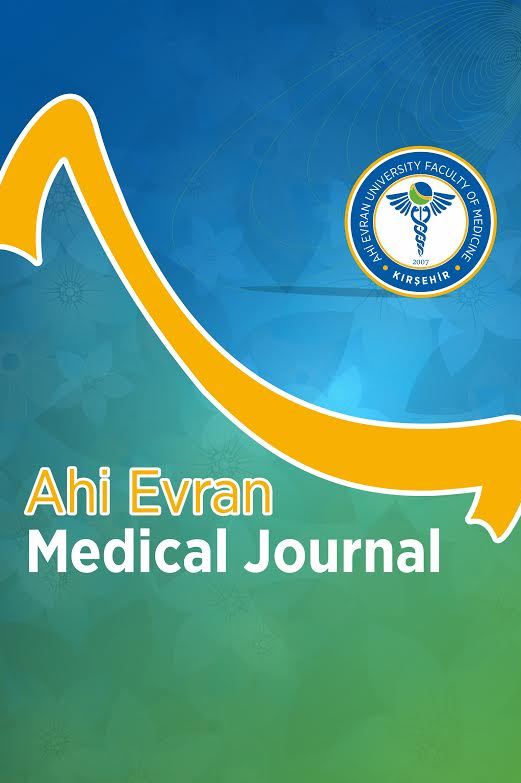Tavşanlarda Yapılan Asetaminofen Toksikoloji Modelinde N-Asetilsistein ve Resveratrol Tedavilerinin Karşılaştırılması
Asetamınofen, parasetamol, NAC, Toksisite, Resveratrol
Comparison of N-Acetyl Cysteine and Resveratrol Treatments in Acetaminophen Toxicity Model in Rabbits
Resveratrol, Acetaminophen, paracetamol, NAC, Toxicity,
___
- 1. Bessems JG, Vermeulen NP. Paracetamol (acetaminophen) induced toxicity: molecular and biochemical mechanisms, analogues and protective approaches. Crit. Rev. Toxicol. 2001;31(1):55-138.
- 2. Bonkovsky HL, Kane RE, Jones DP, Galinsky RE, Banner B. Acute hepatic and renal toxicity from low doses of acetaminophen in the absence of alcohol abuse or malnutrition: evidence for increased susceptibility to drug toxicity due to cardiopulmonary and renal insufficiency. Hepatology. 1994;19(5):1141-1148.
- 3. De La Lastra CA, Villegas I. Resveratrol as an antioxidant and pro-oxidant agent: mechanısms and clinical implications Biochem Soc Trans. 2007;35(5):1156-1160.
- 4. Dernek S, İkizler M, Erkasap N, et al. Cardioprotection with resveratrol pretreatment: improved beneficial effects over Standard treatment in rat hearts after global ischemia. Scand Cardıovasc J. 2004;38(4):245-254.
- 5. Robb EL, Page MM, Wiens BE, Stuart JA. Moleculer mechanısms of oxidative stress resistance induced by resveratrol: Specıfıc and progressive induction of MnSOD. Biochem Biophys Res Commun. 2008;367 (2):406-412.
- 6. Baur JA, Pearson KJ, Price NL, et al. 2006. Resveratrol improves health and survival of mice on a highcalorie diet. Na-ture. 2006;444(7117):337-342.
- 7. Lagouge M, Argmann C, Gerhart-Hines Z, et al. 2006. Resveratrol improves mitochondrial function and protects against metabolic disease by activating SIRT1 and PGC-1alpha. Cell. 2006;127(6):1109-1122.
- 8. Saiko P, Szakmary A, Jaeger W, et al. Resveratrol and its analog: defense against cancer, coronary disease and neurodegerative maladies or just a fad? Mutat Res. 2008;658(1-2):68-94.
- 9. Mann CD, Neal CP, Garcea G, et al. Phytochemicals as potential chemopreventive and chemotherapeutic agents in hepatocarcinogenesis. Eur J Cancer Prev. 2009;18(1):13-25.
- 10. Muriel P. NF-kB in liver diseases: a target for drug therapy. J Appl Toxicol. 2009;29(2):91-100.
- 11. Pendurthi UR, Williams JT, Rao LV. Resveratrol, a polyphenolic compound found in wine, inhibits tissue facto rexpression in vascular cells: a possible mechanism for the cardiovascular benefits associated with moderate consumption of wine. Arterioscler Thromb Vasc Biol. 1999;19(2):419-426.
- 12. Kuo D, Mitchell R, McGill Yuchao X, Mary LB, Hartmut J. Resveratrol prevents protein nitration and release of endonuclease from mitochondria during acetaminophen hepatotoxicity. Food Chem. Toxicol. 2015;81:62-70.
- 13. Wojnarova L, Kutinova N, Farghali H, Kucera T. Sirtuin. 1 Modulation in Rat Model of Acetaminophen-Induced Hepa-totoxicity. Physiol. Res. 2015;64 (4):477-487.
- 14. Bishayee A, Darvesh AS, Politis T, McGory R. Resveratrol and liver disease: from bench to bedside and community. Liver Int. 2010;30(8):1103-1114.
- 15. Wang Z, JiangY, Fan X, et al. Hepatoprotective effect of resveratrol against acetaminophen-induced liver injury is asso-ciated with inhibition of CYP-mediated bioactivation and regulation of SIRT-p53 signaling pathways. Toxicol Lett. 2015;236(2):82-89.
- 16. Farghali H, Kutinova Canova N, Lekic N. Resveratrol and related compounds as antioxidants with an allosteric mechanism of action in epigenetic drug targets. Physiol Res. 2013;62(1):1-13.
- 17. Černy D, Kutınova Canova N, Martinek J, et al. Effects of resveratrol pretreatment on tertbutylhydroperoxide induced hepatocytetoxicity in immobilized perifused hepatocytes: Involvement of inducible nitricoxidesynthase and hemoxygenase-1. Nitric Oxide. 2009;20(1):1-8.
- 18. Sener G, Toklu HZ, Sehirli AO, Velioglu-Oğunc A, Cetinel S, Gedik N. Protective effects of resveratrol against acetaminophen-induced toxicity in mice. Hepatol. Res. 2006;35(1):62-68.
- 19. Masubuchi Y, Suda C, Horie T. Involvement of mitochondria permeability transition in acetaminophen-induced liver injury in mice. J. Hepatol. 2005;42(1):110-116.
- 20. Wadsworth TL, Koop DR, Effects of the wine polyphenolics quercetin and resveratrol on proinflammatory cytokine expression in RAW 264.7 macrophages. Biochem Pharmacol. 1999;57(8):941-949.
- 21. Elbe H, Gul M, Çetin A, et al. Resveratrol reduces light and electron microscopic changes in acetaminophen-induced hepatotoxicity in rats: Role of Inos expression. Ultrastruct. Pathol. 2018;42(1):39-48.
- Yayın Aralığı: Yılda 3 Sayı
- Başlangıç: 2017
- Yayıncı: Kırşehir Ahi Evran Üniversitesi
Fatih DEMİRCİ, Abdulsamet TANIK
Çocukluk Çağı Adenoid Dokusu ve Deri Altı Yağ Dokusu İlişkisinin MRG Kullanılarak Değerlendirilmesi
Mehmet ŞİRİK, Mehtap KOPARAL, İbrahim BUCAK
Serebral Palsili Çocuğu Olan Ebeveynlerde Bakım Yükü, Psikolojik Durum ve Yaşam Kalitesi İlişkisi
Esra GÜNDEDE, Emre ŞENOCAK, Aysel Yıldız ÖZER
Doktorlarda Sigara Bağımlılığı: Anadolu’dan Kesitsel
Recai DAĞLI, Ülgen ÇELTİK, Fatma ÇELİK, Zeynel Abidin ERBESLER, Zeynep KÖYLÜ
Parkinson Hastalığında D Vitamini Düzeyinin Hastalık Şiddeti, Denge ve Düşme ile İlişkisi
Burak TAN, Ercan BABUR, Umut BAKKALOĞLU, Ayşenur ÇİMEN, Cem SÜER, Meral AŞÇIOĞLU
Kronik Ürtiker Hastalarında Fibromiyalji Sendromu Sıklığının Değerlendirilmesi
COVID-19 Nüks, Reenfeksiyon Sıklığı ve Vakaların Klinik Özellikleri
Hümeyra ASLANER, Hacı Ahmet ASLANER, Yasemin SAVRANLAR, Ali Ramazan BENLİ
Bell Paralizisi Olan Hastalarda Hematolojik Parametrelerin Prognostik Değeri Var Mıdır?
Muhammed Gazi YILDIZ, İsrafil ORHAN, İrfan KARA, Saime SAĞIROĞLU, Nagihan BİLAL, Adem DOĞANER, Muhammed SEYİTHANOĞLU
